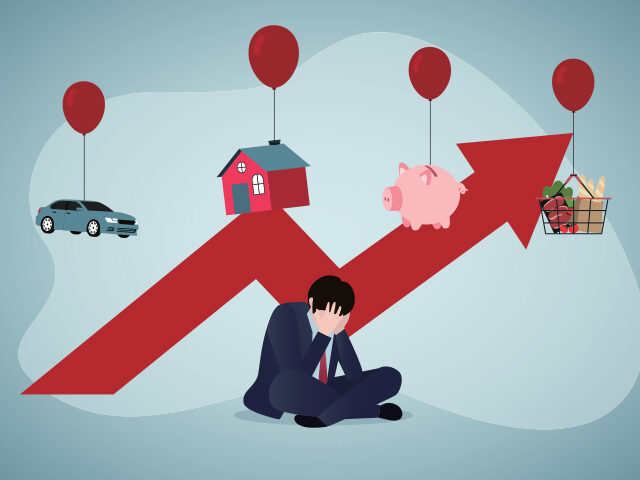Headline CPI Down, Core Inflation Up, Underlying Inflation Still High
Inflation eased to the slowest pace in two years, but signals of underlying price pressures continue to indicate only minimal progress in restoring price stability.
The consumer price index (CPI), which measures the prices of goods and services purchased by U.S. households, climbed five percent compared with a year ago, the Department of Labor said Wednesday. That’s the lowest 12-month gain since May of 2021 and a big step down from the six percent recorded for February.
Core prices, which exclude food and energy, were up 5.6 percent compared with a year ago, an acceleration from the 5.5 percent gain in February.
On a month-to-month basis, CPI rose just 0.1 percent, down from 0.4 percent in February and below expectations for a 0.3 percent gain. Core CPI rose 0.4 percent for the month, in-line with expectations and down a tenth of a percentage point from the previous month’s reading.
Temporary Respite from Rising Gasoline Prices
Prices fell in some of the categories that have a big impact on consumer psychology. Grocery prices fell 0.3 percent. Gasoline prices plunged 4.6 percent. Electricity prices dropped by 0.7 percent. Used car and truck prices declined by 0.9 percent.
Some of that progress, however, is likely to be short-lived. Wholesale prices of used cars suggest these are set to climb again. OPEC recently announced cuts to oil production, which has sent oil prices climbing.
Signals of underlying inflation were less sanguine. The Cleveland Fed’s gauge of median CPI is up 7.1 percent for the year. It rose another 0.4 percent in March, for an annualized gain of 4.9 percent. The 16 percent trimmed mean inflation gauge calculated by the Cleveland Fed is up 6.2 percent from a year ago and rose 0.2 percent for the month.
There were other troubling signs. Airfares jumped 0.4 percent. The price of new cars jumped 0.6 percent, and new truck prices were up 0.3 percent. Household furnishings and supplies rose 0.4 percent. This does not seem to be an economy starved for demand on either the goods or services side.
One odd result: the price of pants and shorts for men jumped 5.6 percent in a single month on a seasonally adjusted basis. Will nothing stop the greed of seamstresses?
The big picture here is that the Fed still has more work to do to cool the economy even after raising rates nine times over the past year. Yet the market is currently favoring just one more hike to a range of five percent to 5.25 percent. Despite Fed officials insisting that they are likely to hold their target high for quite some time, the market currently anticipates that the Fed will start cutting by as early as July. Fed funds futures currently imply less than a 10 percent chance that the target will be 4.75 percent or higher at the end of the year.
As Jason Furman pointed out on Wednesday, inflation appears to have settled at a high rate, and the Fed has made very little progress over the past nine months.
On a three-month annualized basis, core CPI is running at 5.1 percent, which is about double the rate the Fed is likely to see as consistent with its target of two percent on the personal consumption price index.
Fed Chairman Jerome Powell has frequently cited core services excluding shelter as deserving attention. This fell to a tenth of a point to 0.4 percent on a monthly basis and is down to 5.8 percent annually. Still too high, but moving in the right direction.

COMMENTS
Please let us know if you're having issues with commenting.